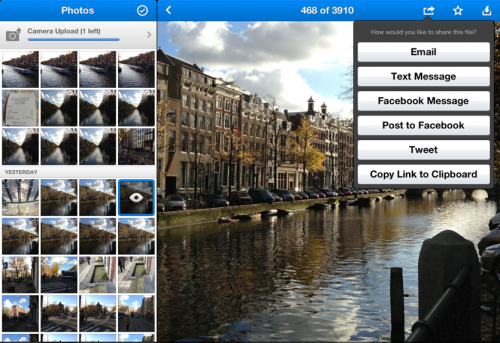Dropbox Launches New Sync API for iOS, Android
Cloud-storage provider Dropbox is aiming to make developers’ lives a little easier with a new Sync API for iOS and Android, which seeks to eliminate at least a portion of the complexity around caching, synching, and working offline. The API allows developers’ apps to work with Dropbox as if the service were a local file-system on an iOS or Android device. Thanks to the API’s local-caching abilities, offline apps sync when they come back online. The API also handles everything from retrying uploads and downloads, to ferreting out any changes in files and folders. “Whatever device, whatever platform, whether their computer at home, their smartphone or their tablet, iOS or Android, it doesn’t matter,” Dropbox product manager Sean Lynch told TechCrunch. “What we want users to be able to expect is whatever device they plug into, they can access their files on Dropbox when they get there.” Dropbox has a vested interest in keeping developers happy, as well as making sure its features work well on the greatest possible number of devices and platforms. According to a study late last year from research firm IHS, the number of cloud-services users will hit 625 million in 2013, on its way to 1.3 billion by 2017. That’s a lot of customers, and thus a lot of potential revenue—which is one reason why “pure-play” vendors such as Dropbox have found themselves facing down Apple, Microsoft, Google, and other titans suddenly interested in offering cheap storage in the cloud. If that wasn’t enough, BitTorrent recently introduced BitTorrent Sync, a service that automatically syncs files between devices; while still in the pre-Alpha stage of development, BitTorrent’s popularity among file-sharers could make its syncing offering a new type of competitor to “traditional” cloud services. Meanwhile, Dropbox is working to improve its position in the eyes of businesses and those interested in extra security: last August, it introduced two-factor authentication as an additional shield against outside attackers. Image: Dropbox

